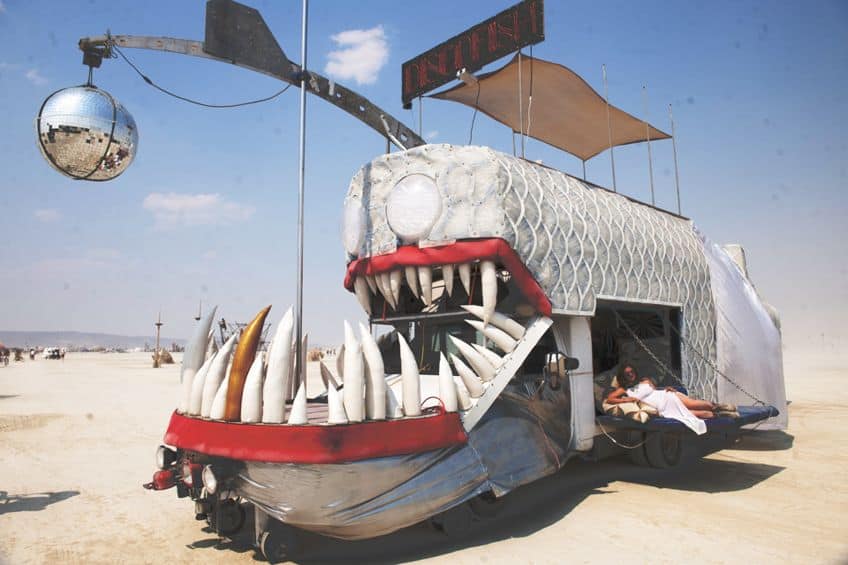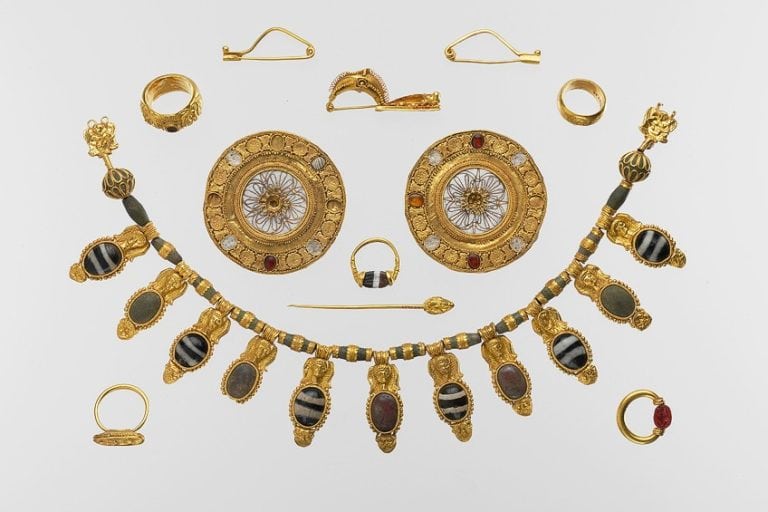Burning Man Art – A Vibrant and Surreal World of Creativity
Welcome to the vibrant and surreal world of art at Burning Man! Imagine a desert transformed into a playground of creativity, where larger-than-life sculptures rise from the sands like mirages, and interactive installations invite you to immerse yourself in a whirlwind of colors and ideas. At Burning Man, art isn’t just admired; it’s experienced, explored, and sometimes even set ablaze in a spectacular display of ephemeral beauty. Join us on a journey through this extraordinary celebration of artistic expression, where imagination knows no bounds and every corner holds a surprise waiting to ignite your senses.
Key Takeaways
- Burning Man facilitates a unique blend of art and community in the temporary metropolis of Black Rock City.
- Art at Burning Man is interactive and participatory, reflecting the event’s culture of inclusivity and collaboration.
- Temporary installations and the ceremonial burning of artworks highlight the festival’s ethos of impermanence and rebirth.
What Is Burning Man?
Burning Man is an annual event that emphasizes community, art, self-expression, and self-reliance. Originating in 1986, it was founded by Larry Harvey and Jerry James. They started by burning a wooden effigy on a San Francisco beach, and the event has since evolved into a significant culture and arts festival.

Held in the Black Rock Desert of northwestern Nevada, United States, Burning Man creates a temporary metropolis known as Black Rock City. Spanning a week and concluding on the Saturday evening before Labor Day, the event culminates in the burning of a large wooden effigy, commonly referred to as the Man. Burning Man is guided by 10 Principles, which include:
- Radical Inclusion
- Gifting
- Decommodification
- Radical Self-reliance
- Radical Self-expression
- Communal Effort
- Civic Responsibility
- Leaving No Trace
- Participation
- Immediacy
Thousands of participants, or Burners, contribute to the event’s culture by creating art installations, theme camps, and a variety of performances. These contributions are not only diverse in nature but are often interactive, challenging the boundaries between performer and audience. The focus on decommodification removes corporate influence and commercial sponsorships, making the experience uniquely driven by participant contributions.
As an ecosystem, Burning Man extends beyond the Nevada desert through global art events and community initiatives, fostering an environment where the participants are creators and active contributors to the shared space and experience.
Historical Context and Evolution
Burning Man is a cultural phenomenon known for its radical self-expression and communal effort, which culminate in the annual event held in Nevada’s Black Rock City. The event is not just a gathering but a canvas for a plethora of artistic expressions that draw tens of thousands from around the globe. At the heart of Burning Man is the art, a testament to human creativity and communal work, exemplifying the event’s ethos of participation and inclusion. Every year, Burning Man Arts empowers artists to forge interactive, participatory art both for the event and for year-round initiatives across the world.
One of the most iconic features of Burning Man is the temporal nature of the art installations scattered across the Playa. These art pieces range from intricate sculptures to massive installations, many of which are designed to be interactive, encouraging participants to engage directly with the works. Unlike in conventional art spaces, the art of Burning Man is embedded within a living community, where the line between creator and audience is purposefully blurred. There’s a synergy between the arid landscape of the Playa and the temporary art installations, which often culminates in the ceremonial burning of select artworks, symbolizing impermanence and renewal.
The ephemeral city that emerges in the desert is the epitome of a participatory culture, where every attendee is welcome to contribute to the artistic tapestry of the event. Burning Man’s art fosters collaboration, pushing the boundaries of what is traditionally considered art by incorporating technology, live performances, and even the audience itself into the experience. Burning Man thus serves as a vanguard for a dynamic cultural movement that challenges the norms of art and society, reminding us of the transformative power of collective experience and expression.
Burning Man has evolved from a small beach gathering to a dynamic hub of art and expression in Black Rock City, fostering an eclectic range of artworks and serving as a canvas for notable artists.
Foundations of Burning Man
The origins of Burning Man trace back to 1986 when a small group led by Larry Harvey burned an effigy on San Francisco’s Baker Beach, igniting a tradition that would evolve into an annual event. This act laid the groundwork for what would become a unique and transformative experience known as Burning Man, held in Black Rock City, a temporary metropolis in the Nevada desert.
Development of Art at Burning Man
As Burning Man progressed, the event became synonymous with radical self-expression and self-reliance. Art at Burning Man has since grown beyond mere observation, with installations intended for interaction. Its art history spans large-scale sculptures, installations, and performances. Artists like Laura Kimpton, Marco Cochrane, and David Best became fixtures at Burning Man with their iconic works:
- “Truth is Beauty” by Marco Cochrane, a towering sculpture advocating for feminine beauty and strength
- David Best’s Temples, which offer a spiritual sanctuary for reflection and remembrance
Other artists, including Candy Chang, Michael Garlington with Natalia Bertotti, Scott Froschauer, Aaron Taylor Kuffner, and Leo Villareal, have contributed to Burning Man’s evolving art landscape, encouraging participation and challenging societal norms.
Legacy of Iconic Artists
The influence of artists has extended beyond Burning Man, impacting the global arts community. For example:
- David Normal’s lightbox art made for the Souk at Burning Man was later installed at the British Museum in London.
- Creations by Aaron Taylor Kuffner and Leo Villareal have impacted the broader artistic dialogue, linking technology to aesthetic expression.
The legacy of these artists reflects how Burning Man has become a catalyst for creative innovation, seeding ideas that transcend the dust of Black Rock City and enter into museums and public spaces around the world.
Artistic Expressions and Collaborations
At Burning Man, the artistic expression takes on a tangible and grand scale, where collaboration is not just encouraged but is often a necessary element in the creation of the artworks.

Sculpture and Installations
Sculptures and installations at Burning Man are landmarks of the event’s temporary cityscape. Large-scale works, such as the iconic Temple, rise from the Playa, created through the collective efforts of numerous artists and participants. These structures are often burned at the event’s conclusion, symbolizing impermanence and renewal.
Teams like FoldHaus have brought kinetic sculpture to life, combining arts with engineering to create interactive and moving pieces that captivate visitors.
Interactive Artworks and Theme Camps
Interactive art is a cornerstone of Burning Man, where the line between observer and participant blurs. Theme camps are interactive spaces that serve as hubs for creative expression, offering experiences that range from immersive performances to surreal environment creations. Artworks are designed to be touched, manipulated, or even climbed on, inviting a level of engagement that transcends traditional art-viewing.

Multimedia and Technological Explorations
The incorporation of multimedia and technology has given rise to a new wave of creative expression at Burning Man. Artworks utilize LED lights and advanced electronics to craft luminous nightscapes that transform the desert into a canvas of light.
Collaborative efforts harness technology to create installations that respond to participant interactions, making each experience of the art unique and personal.
Community Engagement and Support
Community engagement and support play pivotal roles at Burning Man, with artists and participants actively contributing to the festival’s diverse, interactive art landscape. This section delves into how participation and funding intertwine, bolstering a thriving culture of shared artistic experiences.
Participation and Contribution
At Burning Man, community members take home a powerful message: everyone is a contributor, not just a spectator. Artists and participants collaborate, creating a tapestry of shared experiences through public art installations and interactive pieces.
For instance, Kate Raudenbush has been noted for her engaging sculptures that encourage viewer interaction.
Burning Man Arts and Grants
Support for the Burning Man arts ecosystem extends through its grant programs. These financial aids are designed to foster creative projects that resonate with the community-driven ethos. The Black Rock Arts Foundation extends this support far beyond the Playa, contributing to the financial needs of installations in the San Francisco Bay Area and beyond, signifying a growing, community-supported art movement.

Impact Beyond the Playa
Burning Man’s impact transgresses the boundaries of the temporary city. Notable collectives like the Pier Group have seen their work, born in the Playa, reach prestigious venues like the Nevada Museum of Art and the Renwick Gallery of the Smithsonian American Art Museum.
This evolution validates the reach and ethos of Burning Man’s collective creativity, influencing a wider culture while promoting a sense of communal participation and support.
Cultural and Dynamic Aspects
In the context of Burning Man, art transcends conventional viewing, engaging participants in a rich tapestry of cultural expression and dynamic transformation. These aspects are central to the Burning Man experience, where the playa becomes both canvas and classroom.

Principles of Culture and Creativity
Burning Man is built on the foundation of 10 core principles, one of which is Radical Self-expression. This principle manifests in myriad forms, welcoming creative expression as intrinsic to the identity of each participant. Artworks on the playa are not just objects to admire but are participatory, interactive experiences that break the boundaries of traditional art.
Gift giving and decommodification strengthen these cultural ties, encouraging a community-oriented and collaborative spirit.
Transformation of Space and Self
The barren expanse of the Black Rock Desert, or playa, is annually transformed into a waking dream, a physical externalization of hopes and aspirations. Each art installation embodies the transformative power of the event, turning the environment and its inhabitants into a constantly evolving exhibit. This phenomenon extends to a personal metamorphosis, as attendees—often referred to as dreamers—use the event as a permission engine for testing the limits of self-conception and expression.

Future and Furtherance of the Burning Man Ethos
Even amidst pandemic insomnia, the ethos of Burning Man inspires individuals to carry the flame of its culture beyond the event, nurturing it as a subconscious driver for societal change. The future of Burning Man’s art hinges on sustaining these decommodified spaces where the mind-blowing experiences can continue to challenge critics and boundaries, and empower self-reliance among its patrons. The shared experience on the playa acts as a catalyst, ensuring the endurance and evolution of this unique cultural movement.
As we bid farewell to the enchanting realm of art at Burning Man, one thing is certain: the spirit of creativity and innovation ignited here will continue to inspire long after the desert dust settles. From awe-inspiring sculptures to mind-bending installations, this temporary city of art has shown us the power of imagination unleashed. As Burners disperse and the playa becomes a blank canvas once more, we carry with us not just memories but a renewed sense of possibility and a reminder that art, in all its forms, has the remarkable ability to connect, challenge, and transform. Until next time, keep the flame of creativity burning bright!
Frequently Asked Questions
How Can I Purchase Art from Burning Man?
Individuals cannot purchase art directly at Burning Man, as it operates on a decommodification principle. Artworks are typically not for sale during the event to maintain a non-commercial, participatory experience.
Where Can I Find Prints of Art from Burning Man?
Prints of art from Burning Man are not officially sold by the event organizers. However, artists may independently sell prints of their work online or through personal galleries after the event.
What Are the Standout Art Installations at Burning Man?
Notable installations vary each year. They are selected for their ability to inspire participation and for embodying the event’s ethos. Specific works gain recognition for their interactivity, scale, and adherence to the Ten Principles that guide Burning Man culture.
Isabella studied at the University of Cape Town in South Africa and graduated with a Bachelor of Arts majoring in English Literature & Language and Psychology. Throughout her undergraduate years, she took Art History as an additional subject and absolutely loved it. Building on from her art history knowledge that began in high school, art has always been a particular area of fascination for her. From learning about artworks previously unknown to her, or sharpening her existing understanding of specific works, the ability to continue learning within this interesting sphere excites her greatly.
Her focal points of interest in art history encompass profiling specific artists and art movements, as it is these areas where she is able to really dig deep into the rich narrative of the art world. Additionally, she particularly enjoys exploring the different artistic styles of the 20th century, as well as the important impact that female artists have had on the development of art history.
Learn more about Isabella Meyer and the Art in Context Team.
Cite this Article
Isabella, Meyer, “Burning Man Art – A Vibrant and Surreal World of Creativity.” Art in Context. March 26, 2024. URL: https://artincontext.org/burning-man-art/
Meyer, I. (2024, 26 March). Burning Man Art – A Vibrant and Surreal World of Creativity. Art in Context. https://artincontext.org/burning-man-art/
Meyer, Isabella. “Burning Man Art – A Vibrant and Surreal World of Creativity.” Art in Context, March 26, 2024. https://artincontext.org/burning-man-art/.








